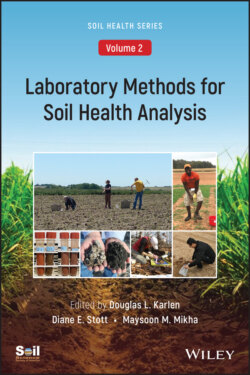Читать книгу Laboratory Methods for Soil Health Analysis, Volume 2 - Группа авторов - Страница 28
Systematic Sampling
ОглавлениеSystematic sampling involves selection of predetermined sampling points, typically in a grid‐ or transect‐like pattern across the sampling area (Table 2.3). Use of fixed sampling points simplifies sampling, with the added advantage of being able to return to the same point in the future. The data are amenable to spatial analyses (e.g., geostatistics) which can be used to identify a range of soil properties within a site (Dick et al., 1996). Use of systematic sampling is best suited for soil mapping when knowledge of the site is limited but resources are abundant.
Caveats associated with systematic sampling include bias based on grid selection. If there are large distances between sampling points, nuances in soil condition that would be detected at finer scales can be missed. Furthermore, systematic sampling may also sacrifice sampling efficiency (e.g., sampling by stratified zone) because points are selected in an established pattern. Accordingly, systematic sampling may be less cost effective than other designs.
